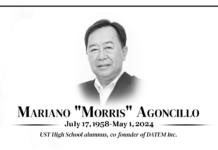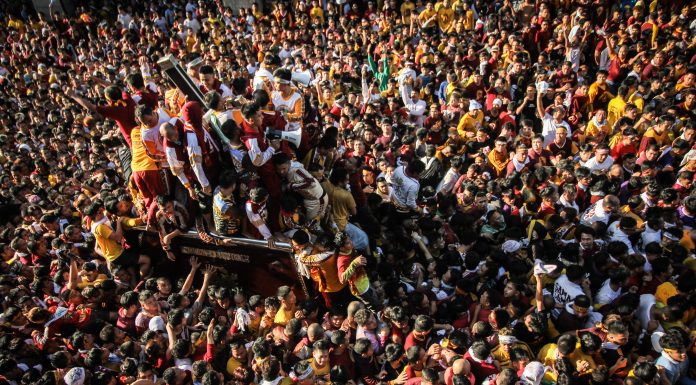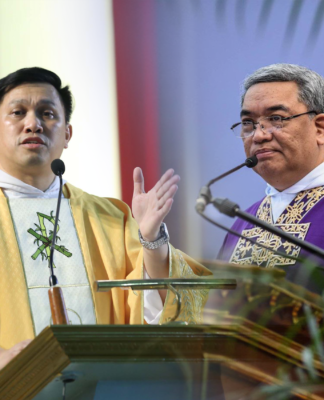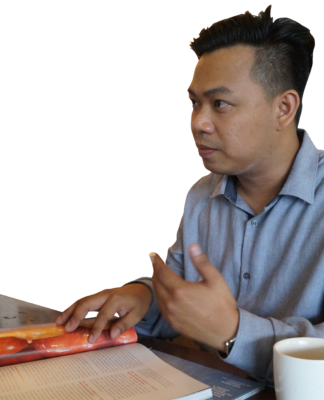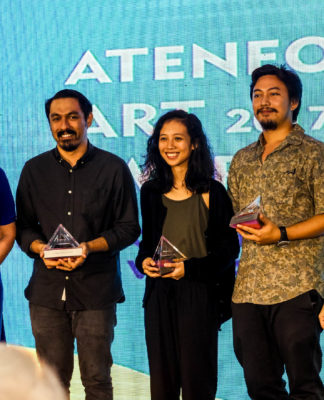TURNING wounds into wisdom.
From January 1942 to February 1945, the Japanese converted the University of Santo Tomas into an internment camp that housed approximately 3,000 American Civilians.
This forced the internees to leave their homes, their families, and their way of life to succumb to Japanese colonizers.
Among those who survived was Leslie Ann Murray, who now works as vice-president of the Filipino-American Memorial Endowment, a foundation established in 1986 that aims to preserve and maintain tangible connections among Americans, Filipinos, and their allies who fought side-by-side in the Second World War.
Japanese Conquest
After bombing Pearl Harbor on Dec. 7, 1941, the Japanese then invaded the Philippines. “I was only two years old at that time and I was five years old at liberation [from the Japanese],” she said.
Throughout the war, gunshots were common, causing the likes of Murray to despise the sound of violence.
“That still lives with me. I could not stand New Year’s Eve. I do not like fireworks. Every time they fire off to salute during Memorial Day at the American Cemetery, I have to close my ears for I could not really stand its sound,” she said.
She added that people that time panicked as banks were robbed, stores ran out of supplies, and schools were closed.
“My dad was in business here and that is why we got caught,” she said. “All Americans had to report and all foreign nationals who were not allies of the Japanese had to be interned.”
Behind the walls
But what was supposed to be a three-day stay turned out to be a three-year agony.
“In the beginning, the Japanese were very liberal because they were not prepared to feed 3,000 people. Obviously, we ran out of supplies in the long run so they allowed people to bring in food,” she said.
Despite the prisoner-like conditions, Murray noted that they were well-treated, but due to scarcity of supplies, they were the ones in-charge of their welfare.
“I do not have any recollection of any mistreatment other than lack of proper nutrition and food. I had no milk from the age of two to five and the food we have in camp was very minimal,” she said.
Nevertheless, the facility was open to the process of sending home anything they wanted, like sending out laundry and having them back, while others were fortunate enough to get home-cooked meals.
“In the beginning the food came in from people on the outside who were not interned. The Swiss, the Spanish, and friends would bring in food to the gate and we would take food packages,” she said.
Soon enough, the camp organizers set up an Education Department and they had classes taught by interned American teachers. There were even those who graduated from high school that year.
“I went to school. They had a little school [inside] established by fellow Americans and I had to bring my own chair every time I go to class,” she said.
Death March
The cruelty of the Bataan Death March was also vividly captured by Murray’s young mind. Even if she did not directly experience its horror, she witnessed how Filipinos and Americans suffered from such fate.
“The Japanese made the men march through the heat about seventy-five American miles, with no food. When they started the march, they were sick because of lack of food. They were hungry, they had dysentery, malaria, and so on, and naturally it was hard to make the trip, and it was hot, the hottest time of the year,” an article from one of Murray’s memoir works stated.
“My parents lost a lot of friends on the Bataan Death March. There were Hell Ships, these were the ships where the prisoners were put on to be taken to Japan for labor force,” she said. “A lot of these ships were sunk by the American military because they did not know that there were Americans on board—the Japanese had them camouflaged. They sank these Japanese ships and thousands of American military were drowned and killed.”
New beginning
After the war, survivors faced their lives with more courage. It was even more difficult for them to live again out of the ruins of the three-year warfare.
“My mother decided that we stay at the camp for one more year. She wanted to make sure that the chaos was over,” she said.
Leslie’s family had a harder time after the war.
“That was difficult because we didn’t have any place to stay. Everything was bombed out. So we had to stay with friends and anyone who had a house they could spare us,” she said. “Usually it was very difficult because the houses were damaged in the war.”
Murray captured a vivid picture of the Santo Tomas Internment Camp in her mind.
“Everything looks the same in Santo Tomas. The camp is similar [with the look of UST today] in a sense,” she said.



